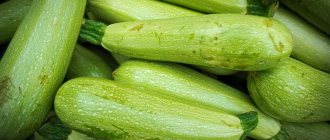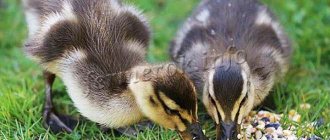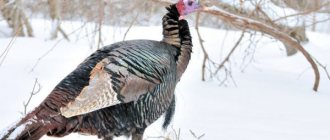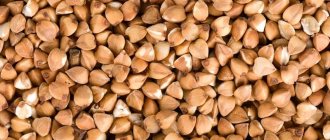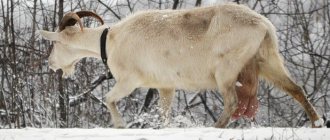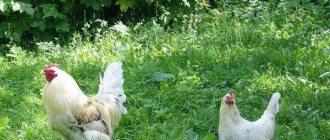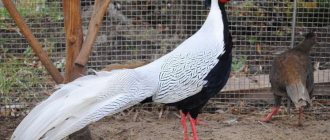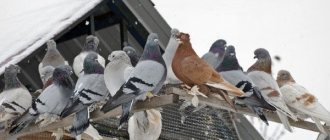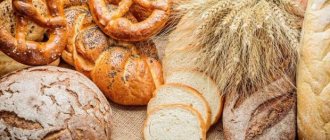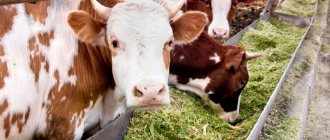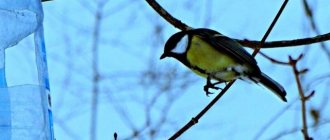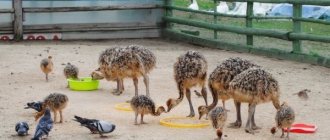The basis of the diet of wild and domesticated birds is food of plant origin, as well as small insects and their larvae, fish fry, amphibians and even mollusks. For domesticated birds, a balanced diet is very important - overfeeding, underfeeding or low-quality, unsuitable food can cause serious digestive problems and even lead to death.
Swans feeding in nature
What do swans eat in natural conditions?
In nature, they live in open or partially overgrown bodies of water - lakes, rivers, and occasionally in swamps. Most of them fly away to spend the winter in warm regions, where the water does not freeze even in winter. Species living in the Caspian Sea and the southern regions of Eurasia do not fly away for the winter.
In nature, swans live in open or partially overgrown bodies of water.
What eats in the water
Favorite food is roots and green parts of aquatic plants, duckweed, small invertebrates - mollusks, aquatic donkeys. It can stick its head under water and use its beak to catch passing fish and frogs. The depth of the dive reaches 90 cm due to the long neck, but the back half of the body remains on the surface, like a duck.
Swans dive for food
The birds take a beakful of silt and strain it. From the remaining thicket, the edible is separated from the inedible with the tongue, the unnecessary is spat out, and the useful - plants and animals - are eaten. The chicks catch small crustaceans, snails, and daphnia in shallow water.
Video - Feeding swans in the wild
What to eat on land
On land, it nibbles grass, eats grains, and does not disdain worms, larvae, shells, and lizards. Chicks prefer protein-rich animal foods.
Chicks independently find food on the shore
During molting, an adult eats up to 4 kg of plants per day. He has a good appetite: to maintain shape, he needs to eat up to 25% of his own body weight per day. Under stress (sharp change in weather, illness, death of a partner, change of habitat), appetite increases.
Swans eat grain in shallow water
Reproduction and offspring
Swans return to their usual habitats in the spring, in some cases early, when the reservoirs are still covered with a crust of ice, and in some - almost in May. This applies to the northernmost borders of their habitat. Moreover, the swans return in pairs, since they searched for partners in warmer climes.
Swans are considered monogamous birds, so they form pairs for their entire lives. If something happens to one of the partners, then the second partner will no longer look for a soul mate. If you believe the legends, then swans who for some reason have lost their soul mate cannot continue to live and die of grief. Today, such beliefs are considered speculation, since scientists have not yet been able to confirm such legends.
Having returned from the warm climes, a pair of swans settles in the previously chosen territory and immediately begins to form a nest. The nest is a pile of various elements, in the form of tree branches, twigs, reeds and dry coastal grass. In this case, the nest is always afloat. Swans aggressively guard their nest from the encroachments of their relatives, so fights often take place between the birds. When birds fight for their territory, they scream loudly and flap their wings. They collide with each other in the water and beat each other hard with their wings.
In any case, after the pair manages to defend their nest, the female lays several eggs, after which they begin to incubate them. This process lasts up to 40 days, after which the chicks are born. When the female sits on the eggs, the male protects her and also warns her of danger. In case of serious danger, the birds fill the nest with down and rise into the sky. After that, they circle over this place until the real threat disappears.
Need to know! If by chance you come across a nest of swans with eggs or chicks on your way, it is better to leave this place immediately. Birds will very fiercely protect their future offspring, using their strong wings and powerful beak. As a result, they are capable of causing serious injuries to a person, and sometimes incompatible with life.
When swan chicks are born, they already know what to do. They immediately begin to move independently and get food for themselves. Despite this fact, parents take care of their offspring for at least 1 year. In the first stages, parents protect them from bad weather until they are properly strengthened. By autumn they have enough strength and energy to go with their parents on a long journey for the winter. In spring the whole family returns to its roots. Swans do not mature so quickly, so they become sexually mature only in the 4th year of their life.
Mute swan and its offspring
Feeding swans: why, how and when
It is recommended to feed only at low temperatures (from -15°C and below) or in case of illness or injury. If in winter a bird sits on the ice with its head hidden under its wing, and ice or drizzle appears on its neck, then most likely it is sick, injured or hypothermic.
A healthy bird accumulates about 20% of its body weight by winter, so it is not afraid of frost. Secretions from the coccygeal gland lubricate the feathers and prevent them from getting wet, subcutaneous fat warms and gives strength even with insufficient nutrition in winter.
Swan plumage does not get wet in icy water
In winter, swans living on a pond are fed by throwing food directly onto the ice, into the water (wormwood) or from a basin. In the warm season, they prefer plant foods - greens, finely chopped beets, carrots and cabbage, boiled potatoes, and corn leaves. In cold weather, you need more high-calorie feed - grains.
Even in winter, the swan rests with its head hidden under its wing.
Natural habitats
Most species prefer temperate climates for nesting, and only a few prefer to live in the tropics. It should be noted that the habitat is very extensive, so swans are found both in Europe and in Asia, Africa, as well as in the north of South America. In Russia, swans can be found more in the tundra zone, and sometimes in the forest-tundra. Moreover, the southern borders of their habitat are connected with the Kola Peninsula and Crimea, as well as with the Kamchatka Peninsula and Central Asia.
Interesting to know! Species such as whooper and mute are considered national treasures in some countries. In the first case it is Finland, and in the second it is Denmark. Mute swans in England represent the personal property of the queen herself. In addition, the meat of these swans is allowed to be consumed exclusively by the royal family.
As a rule, swans prefer to settle within the water areas of large lakes, the banks of which are overgrown with reeds or other aquatic vegetation. They can be seen on the coasts of the seas if there are reed thickets nearby. If people do not chase these birds and treat them with respect, then they easily stop at bodies of water located near populated areas. Despite the fact that swans are considered migratory birds, they can easily stay for the winter if there are ice-free water areas.
Feeding swans in winter: advice from zoologists
A healthy swan will not stay in a pond if it cannot find food in it for 3-4 days. He may not eat for several days even in winter, this will not affect his health. If he sees that the pond is completely frozen or there is no food in it, he flies to a more suitable place.
In the wild, you can feed only sick, wounded birds or in very cold weather.
The swan's beak froze due to severe frost
In severe frosts, swans spend more energy maintaining body temperature, so they are given grains:
- oats or oatmeal;
- wheat;
- millet;
- barley (barley).
Winter feeding on the city beach
The cereals or mixture are steamed as follows:
- Place all the grain in a large container (bowl, bucket, basin).
- Fill it with clean hot water.
- Leave for 3-4 hours at room temperature.
If you don’t want to steam, but rather germinate grain:
- Place all the grain in a large container (bowl, bucket, basin).
- Fill with clean cold water.
- Leave for 11-16 hours at room temperature.
Population and species status
It should be noted that most species, or rather all, except the small swan, are not listed in the Red Book of Russia. Even the little swan has the status of a species being restored, while the remaining species are characterized by the status of “least concern.” Along with the small swan, the American swan is listed in the Red Book, under the status of “rare species”. In other words, the seven species of swans remaining on Earth are doing well and are in no way classified as endangered species, compared to other species of birds.
Swans, thanks to their attractive appearance, which is in no way characteristic of other representatives of this family, have earned respect among people for many years. This respect and love is also due to the fact that these birds are strong and fearless, proud and independent. Different peoples have different attitudes towards them, but in any case only positive ones, which is associated with the beauty of these birds. Some peoples believed that they descended from swans, and the Mongols, in particular, argued that people descended from the paws of these independent and strong birds. Some peoples of Siberia were sure that swans did not fly south, but simply turned into snow. After the onset of spring, the snow, on the contrary, turned into swans and so on for centuries from year to year. All this only indicates that swans have attracted human attention for many centuries, which is also associated with many epics that have been retold from generation to generation, forming the image of a mysterious and beautiful bird.
How to feed swans living near humans
Swans easily get used to humans, so they take root well in nature reserves, wildlife sanctuaries, protected areas and zoos. They can often be found in city gardens and parks equipped with ponds.
In some parks and private farms, they make a floating house on the water or put straw on the shore for rest and food.
Mutes in the city park
Mute birds and whoopers living near humans eat everything that is offered. The common belief that they can be fed with bread and rolls is erroneous and leads to the death of hundreds of birds every year. In fact, spoiled bread is dangerous - moldy, damaged by fungi or pests. Even good bread can cause illness or death of chicks, so young animals should not be fed or even fed with it. Adults can be given some white bread by throwing it into water.
Swans equally love plant foods from water bodies and land. In the southern regions, corn and potato residues are eaten after harvesting. Mute loves small fish, snails, river and lake mollusks, crustaceans, tadpoles and frogs.
Plants are the basis of a swan's diet
From this article you will learn how to keep a black swan in a private household, how to breed and how to feed these graceful birds.
What to feed swans on a backyard farm
In the household, the main part of their diet is plants. Animal feed makes up no more than 20% of the daily ration, grains - about 10%. Adults are fed twice a day, morning and evening.
Summer diet of adult swans
In summer, instead of vegetables, they give finely chopped grass - chaff. In addition to food, swans should always have free access to a pond with clean water and plants - aquatic or land, since the basis of their diet is grass.
In summer, the main food is greens
An approximate summer diet for adult birds consists of:
- Sliced white bread, bran, millet or barley - only 250 g;
- Minced meat (meat or fish) – only 230 g;
- Green feed (grass, lettuce) – 0.5 kg;
- Mineral nutrition (chalk, bone meal) – 20 g.
Winter menu
The winter diet differs from the summer diet - it does not contain green food, but contains more grains. The smaller amount of fish or minced meat is explained by the fact that in natural conditions in winter it is difficult for birds to catch fish, and ground protein food - worms, mollusks and small animals - is hidden under deep snow. In winter, swans are accustomed to eating less animal food, but more long-lasting carbohydrates, which provide them with energy and warmth for a long time.
In winter you need more grains to keep you warm
Winter diet of an adult.
- Sliced white bread, barley, oats, millet or bran – 700 g;
- Minced meat (meat or fish) – 20 g.
- Root vegetables – 300 g.
- Mineral fertilizing – 20 g.
Do-it-yourself compound feed
When raising swans on a personal yard or farm, they use homemade feed, because commercial feed is not produced for them. It is better not to use feed for chickens, geese, turkeys, quails, ducks, because they have different needs for nutrients, minerals and vitamins.
Do-it-yourself compound feed
Daily diet for adult swans
How to prepare feed:
- Finely chop vegetables, herbs, root vegetables, and bread.
- Mix all ingredients in a large food container (bowl, enamel basin, bucket, pan).
- Add water to form a semi-liquid mixture.
Vitamins and minerals for swans
What to feed swans on a farm
The diet of chicks raised in captivity differs from that of adults - all components are chopped finer, the protein content is higher. Its main components:
- millet porridge;
- chopped hard-boiled eggs;
- minced fish;
- minced meat.
Female swan hatches chicks
Dairy products are very useful for chicks - yogurt, cottage cheese, kefir, yogurt. They find plant food in the pond themselves or with the help of their parents.
Before feeding, the fish (in the form of minced meat) is mixed with cereals and diluted with water until a moist slurry is obtained. No more than 10% of the mass of the finished mixture is added to minced fish.
Chicks on the shore of the pond
For adults and young animals, minced meat can be replaced with meat and bone meal in the amount of 4-7% of the daily feed volume.
Approximate diet of swan chicks
Is it possible to feed ducks bread on a pond?
- First of all, no wild birds should be fed black bread at all.
Giving ducks brown bread is even more dangerous than white bread. Black bread contains more ingredients: malt, honey (artificial), spices. Even a small amount of it instantly causes sticking of the stomach, fermentation and bloating of the intestines or volvulus in birds.
2. You cannot feed ducks chips or popcorn - this is foreign food to them and their stomach is not able to digest it, which leads to a quick and painful death. 3. You cannot feed sweets to wild birds (especially chocolate, even chocolate-covered buns!) 4. It is forbidden to feed salty foods (for example, saltine crackers or bread) to ducks - they may develop salt poisoning. 5. White bread does more harm to ducks than good. And now in particular detail why it is harmful to feed ducks white bread. In the natural diet of wild birds there is nothing even remotely similar in composition to bread. White flour bread isn't just unhealthy food for animals - it's the worst thing possible for them! The reason is that bread contains nothing but carbohydrates, i.e. it provides no value to animals. Although ducks eat it with pleasure. But a well-fed duck is unlikely to look for food naturally. As a result, she will not receive the nutrients she needs - in particular, vitamins D and E, as well as manganese. And soon he will get sick. In fact, by feeding birds bread, you are dooming them to die in severe suffering. Bread causes ducks to develop a disease with the poetic name “Angel Wings.” This is when, due to an unhealthy diet, a bird's wings begin to move to the side instead of resting against the body.
Growing feathers become engorged, heavy, and curled. As a result, the shape and span of the wings changes: they rise and move to the side. For this reason, birds are deprived of the ability to fly. And this condition is incurable! It develops due to the high calorie content of the diet and the excessive content of protein and carbohydrates in it. Often bread remains uneaten due to mold on it. It should never be fed to wild birds - mold is strictly contraindicated for ducks.
It can cause a fatal disease - aspergillosis. The infection affects the respiratory system and serous membranes. This disease is fleeting and difficult to self-diagnose. If it progresses rapidly, the death of the bird occurs 2–6 days after infection. Constantly receiving food (and not just bread), ducks become lazy and do not try to get their own food. They feed only on what humans give them, and do not receive the necessary microelements and vitamins. This leads to a reduction in the life expectancy of the bird. Feeding ducks bread is the same as feeding small children unhealthy fast food.
Birds get used to this food and no longer want to eat other healthier foods. Often consuming high-calorie bread, ducks quickly gain weight and it becomes difficult for them to fly and escape from danger. Feeding ducks in city ponds is also dangerous because the birds, receiving constant food, multiply quickly. Infectious epidemics begin to develop in closely crowded groups of birds. In addition, pieces of bread not eaten by ducks pollute water bodies and lead to the growth and bloom of toxic algae. These, in turn, cause many parasites to appear in the water and all living creatures in it become vulnerable to infections. Often, rats begin to flock to ponds where pieces of bread remain.
Zoologists call for feeding waterfowl only during extreme wintering periods, when the temperature drops sharply below -20 degrees, and only in places where birds gather in large numbers (flocks of more than 200 individuals), or when rescuing birds with physical injuries, when they could die without human help.
What not to feed swans
Chicks should not be fed bread - it causes indigestion and often causes their death. It can be given to adults in small quantities, white and black, without mold, fungal infections and pests.
Don't feed swans bread
Video - Environmentalists ask not to feed swans bread
Dry grain
Swans cannot eat dry grain - it is too hard, dense, scratches the walls of the stomach and is not digested in the intestines. For this reason, all grain feeds for them must be filled with hot water (steamed) or sprouted in cold water for 11-15 hours. The food is placed in a basin or large container with clean and fresh water - they strain it themselves, allow the excess liquid to drain and eat it.
Is it possible to feed domestic and wild ducks with bread?
It is not recommended to feed wild ducks with bread due to the fact that they are adapted to obtaining food in natural conditions and, therefore, feeding leads to the fact that their instinct to obtain food on their own is dulled. As a result, with good complementary feeding, wild ducks stop flying to warm countries to search for food due to the sufficient amount of food in the place where they live. And since temperature conditions can change sharply, and complementary feeding may be inconsistent, wild ducks may die of starvation.
Feeding bread
Feeding domestic ducks bread causes the fresh bread to swell in the stomach and cause intestinal blockage. Bread contains a large amount of carbohydrates; the nutritional value of this product is very low. Even with good functioning of the digestive system, the bird gains excess fat mass, which negatively affects the quality of meat and the productive functions of ducks. Many poultry farmers claim that feeding birds bread does not cause them much harm.
But since today there is a large selection of various feeds, the inclusion of bread in the diet is impractical. Therefore, if a farmer has a large amount of bread and bread products, then it can be added to the philistine not for ducks, but for pigs. Moldy bread and crackers with mold are dangerous food for any birds and farm animals. This product can cause a disease such as aspergillosis. The disease is dangerous, causes mortality within two days and cannot be treated. Therefore, moldy bread is prohibited and cannot be used to feed animals and birds.
How to feed a sick swan
It happens that a swan swallowed fishing weights instead of small stones or was hunted, and lead shot remains in its body. In the goiter, pieces of lead rub against each other, its particles enter the stomach, from there into the intestines and into the blood. Lead causes acute poisoning in birds.
When lead poisoning occurs, the droppings become watery and green, they become weak, move little, eat poorly, and their feathers become ruffled.
A healthy swan is active and eats most of the time
Patients are given honey diluted in water in a 1:1 ratio. A glucose solution at a concentration of 5% helps well. One adult bird needs 50 ml per day.
Chicks sick with salmonellosis are fed curdled milk or other fermented milk products; a little potassium permanganate (until a light pink color) or honey (until a sweetish taste appears) is poured into the drinking water.
Any medications (medicines, vitamins, minerals) are given internally in a mixture with small fish or minced meat.
Is it possible to give bread
Swans can eat almost all types of grains, as well as bran and rolled oats. However, whether it is possible to feed swans bread, like a grain-containing product, is a controversial issue. In city parks and zoos you can see a swan happily eating the offered bread and crackers, but ornithologists and veterinarians have not come to a consensus about the dangers or benefits of this product. Fresh bread in small quantities will not cause harm, but the bread must be soaked in water. Swans can be fed both black and white bread - the main thing is not to feed more than a few pieces. Bread with mold, dry, stale can cause digestive problems and poisoning.
Swans in winter: when saving, do no harm!
The Kaliningrad Zoo again began to receive calls from residents of Kaliningrad, who, on the eve of winter, were concerned about the fate of the swans living on the city lakes. This situation repeats itself from year to year. We have collected the most frequently asked questions and tried to answer them in order to explain what to do when meeting swans and whether all birds need to be “rescued” in winter.
Why didn't the swans fly away with their relatives?
"Decreased migratory instinct."
This is the scientific name for the reluctance of birds to fly to warmer regions with the onset of cold weather. Scientists see several reasons for this behavior. Firstly, winters in the Kaliningrad region are becoming warmer every year. The reservoirs do not freeze and swans always have access to their main food - algae. Secondly, swans attract a huge number of people who, with the best intentions, feed them. Naturally, the birds get used to humans and absolutely do not want to part with their “grain places” on city lakes. IMPORTANT TO REMEMBER! By feeding swans, humans do them a disservice. Birds continue to wait for their “breadwinners” even with the onset of severe frosts, however, they, as a rule, prefer not to go outside again. The fed birds suffer, but cannot immediately find their bearings and fly to unfrozen bodies of water. As a result, some get sick and even die. What do swans eat in winter?
The main food of waterfowl is algae. And as long as the reservoir is not frozen, the swans have access to food. With the onset of severe frosts, many swans move to the ice-free sea coast, where they safely feed until spring.
What can you feed swans in winter?
Ideally, it is better not to feed swans at all (see point 1).
But if you are going to feed, then you need to do it in such a way as not to harm the birds. 1. Swans should absolutely not be fed black bread! It causes fermentation in the stomach and, as a result, gastrointestinal upset, weakness, and illness. White bread is acceptable in the absence of other food, but in extremely limited quantities! 2. Swans should absolutely not be fed moldy or sour bread! For birds, as for people, spoiled food is deadly. 3. In cold weather, swans can be fed raw or lightly boiled shredded vegetables: cabbage, carrots, potatoes, as well as steamed rice or millet. However, in severe frost, all this food freezes to the ice. In this case, a grain mixture of wheat, oats and barley or a special feed for birds that does not contain salt is suitable as feed. IMPORTANT TO REMEMBER! The swan's digestive system is designed in such a way that it must wash down its food. Therefore, food should be thrown into the water or onto the shore at the very edge of the water. As a last resort - on the ice. How can I determine if birds need my help?
A bird needs human help if: - there are obvious signs of injury or damage, - the bird is lying on the ice and its plumage is covered with a crust of ice or icicles.
In all other cases, the bird most likely does not need human help. Moreover, swans are able to safely tolerate temperatures down to -15 degrees. In this case, the bird spends all its energy on saving energy and maintaining heat. She chooses a safe place on the ice away from the shore, lies down and rests. The worst thing you can do in this situation is to drive her away from her home. IMPORTANT TO REMEMBER! If a bird has fishing line stuck in its beak, don't cut it! A weight or hook can be attached to the fishing line. If you cut the line, it will be impossible to pull it out. In this case, it is better to entrust the release of the bird to veterinarians. Can I “surrender” a swan to the zoo?
The Kaliningrad Zoo does not accept swans for the following reasons: 1. according to Art. 4 of the Federal Law “On Animal World”, wild animals and birds are the property of the state. Their removal from nature is possible only with the permission of the competent state authorities. authorities, for example, Rosprirodnadzor. Violation of this requirement entails the imposition on a legal entity of an administrative fine of 10 to 20,000 rubles, 2. the adoption of animals from the wild is prohibited by veterinary standards, 3. The Kaliningrad Zoo does not have sufficient space and conditions to keep a large number of swans. Especially considering the fact that every year they try to “place” from 10 to 20 birds here.
What do they eat in winter?
Swans can easily tolerate cold weather. In cold weather, they practically do not move, tucking their paws under their body, or move very slowly so as not to waste energy.
When water bodies in the northwest become covered with ice, the birds move to ice-free southern lakes and sea coasts, where they feed until next spring.
In winter, in search of food, whooper swans, trumpeter swans, and other species fly around the fields, eating the remains of grass and cereal crops from them.
Ornithologists say that in winter, healthy swans need to be fed only when the temperature drops to minus 15°.
What to feed the swans?
Swans living in the wild and birds living in park ponds eat the same food. There is no need to feed them. They themselves will find the food they need on the pond or on the shore. Park visitors often give the birds bread. Swans eat it willingly. Experts warn that feeding birds bread is not recommended. This can cause gastrointestinal upset. Dark bread is strictly prohibited for them. White is given in small quantities. They throw it into the water to soak it. Bread should not be given to chicks. What do swans eat? What to feed them at home?
Feeding birds in winter
Healthy wild birds accumulate fat reserves for the winter, which help them survive the meager winter diet. But in a harsh winter (frost below 15 °C) or a bird that is weakened, perhaps by illness or injury, needs to be fed, otherwise it will die. For these purposes, feeders are installed on the ice of frozen reservoirs or on the shore.
What can you feed?
Typically, grain, feed for chickens or other poultry are poured into feeders.
Oats or oatmeal
This grain crop and porridge from it contain fatty acids, minerals, protein and carbohydrates. The body needs calcium and iron for strong bones and muscle tissue and sufficient hemoglobin levels. Magnesium and potassium support the heart, digestive system and central nervous system. Protein and carbohydrates are the main source of energy, and fatty acids help maintain heat and prevent hypothermia.
Wheat
The grain contains almost the entire group of B vitamins, and this is the health of many systems: digestive, nervous, endocrine. Vitamins E and C help birds strengthen their immune system and keep their skin and feathers healthy. Minerals are responsible for the health of bones and joints, fiber facilitates and improves digestion.
Millet
Millet is rich in protein - a source of energy, fats, and starch. The latter, in the process of synthesis in the body, is converted into glucose - an additional source of energy. By the way, millet waste is a common component for animal feed. Millet is also rich in micro- and macroelements and mineral salts.
Barley
Barley is also used in the production of concentrated feed for animals and birds. It contains a large amount of minerals, organic acids, vitamins (A, B, E, C), fiber and other useful substances. This is one of the few grains that contains lysine, which regulates cholesterol levels in mammals and birds.
What not to feed
When feeding swans, you need to know the list of foods that can be harmful to health.
Black and white bread
Rye bread is rich in acids, which irritate the mucous membranes, and should absolutely not be given. The same applies to sweet baked goods made from wheat flour: sugar will cause fermentation in the stomach and may affect blood clotting. Bakery products with various additives can also negatively affect digestion. Wheat bread can be given in small quantities.
Spoiled products
Products with rotten or moldy areas are strictly contraindicated - they are a breeding ground for pathogenic microorganisms. At best, they will cause digestive upset, at worst, poisoning and death.
Natural conditions
Swans always choose shallow bodies of water with abundant vegetation. This is vital for them. They build nests among thick tall grass, and numerous algae become their food. They are easier to get in shallow water. The swan is capable of diving to a depth of 90 cm. Using its long neck, it can reach the bottom, tearing off the stems and leaves of plants. In addition to algae, birds also find other food in the pond:
- small fish;
- caviar;
- bloodworm;
- shellfish;
- Small crustaceans are a special treat.
During the molting period, swans require more vitamins and mineral salts, so they can go ashore in search of nutritious food. On land they move slowly, waddling from one side to the other. When outside the reservoir, birds become inactive, which makes them vulnerable. They cannot take off from the ground or all their movements are slow and clumsy. On the shore they eat green grass rich in vitamins. The following vegetation is preferable for swans:
- clover;
- alfalfa;
- dandelions;
- plantain;
- sometimes a flock can land on a field with cereal plants; birds love oats, wheat, barley;
- Corn is useful for them, both young shoots and mature cobs.
The flock rarely grazes in the fields. If this happens, then she just needs to be scared. Killing swans is prohibited. They are listed in the Red Book. Unfortunately, having experienced stress, they can leave not only the field, but also the pond. Ornithologists recommend feeding the birds a little by scattering grain on the shore. This will help preserve the crops.
You should be careful with feeding. Constantly helping birds and looking for food is not recommended. They quickly get used to people and new conditions. The swans will simply stop looking for food, hoping for human help. There is another situation where you can bring them extra food. This is winter time, frost -15 C. For some reason, a flock or individual individuals may not migrate and remain in the reservoir.
In winter, the bird becomes inactive. She moves slowly in the ice hole, saving energy and body heat. You can expand it with wormwood and place food on the ice. They need help if icicles are found on their feathers or beak. This means that the swans are freezing and can no longer warm themselves. A crust of ice on the beak will prevent the bird from eating. Frostbite of the extremities will lead to necrosis. The bird will die.
Ornithologists or farm keepers take the livestock to warm farms. This is difficult to do because the individuals will defend themselves. They resort to the help of veterinarians who give injections with sleeping pills. When keeping livestock on a farmstead, it is necessary to organize a certain diet. What to feed swans in households?
Top 20 facts about Swans
- Swans belong to the order Anseriformes of the Anatidae family.
- Swans are distinguished by their beauty, long life span and monogamy.
- Swans are the largest waterfowl in Europe.
- Depending on the species, the body length of adult individuals reaches 120-180 cm, and the weight can reach up to 15 kg. The wingspan of these birds is about 2-2.4 meters.
- These birds do not like to walk on land, but mainly move on water.
- There are 7 species of swans in the world: black swan, black-necked swan, whooper swan, mute swan, American swan, small swan, and trumpeter swan.
- Most of the species of these birds are listed in the Red Book.
- The male and female are not much different from each other. The white swan is one of the largest waterfowl, differing in size and weight, which reaches 10-13 kg. Its body is elongated, long (about 150-170 cm), its neck is long and looks very elegant. The strong wings have a span of almost 2 meters, the legs are short, dark in color, and located slightly behind. The beak is gray or black and yellow.
- There are many beliefs about swans and their fidelity to their partner until the end of their lives. But one thing is certain: the swan is a monogamous bird and, having created a pair, it remains nearby as long as the companion is alive. But having become a widower, the male or female will create a new pair, and will not remain a hermit until death.
- The mute swan shows its irritation and dissatisfaction with a special hissing sound, which is where its name comes from. In England, the mute bird is considered the royal bird. This is a large breed that can weigh up to 12 kg, and in captivity - up to 15 kg. The color of the plumage is white, and the head is buffy. The beak of this species is red with a marigold. It curves its neck when swimming through the water, unlike other breeds that hold their neck straight. Juveniles up to 3 years old are brown in color, but then they turn white. The lifespan of a mute swan can be up to 28 years. This species is found in the northern and southern parts of Europe and Asia.
- The swan looks beautiful due to the fact that its body is covered with very thick plumage. And few people know that the number of feathers is 25 thousand units. This bird is a record holder, but during seasonal molting it loses a lot of feathers and cannot fly for some time.
- Among the duck family, swans have the longest necks. At the same time, the record holder among its relatives is the black swan, the cervical region of which consists of 23 vertebrae and reaches half the length of the individual’s body. Such an impressive neck size allows these birds to obtain food at the depths of reservoirs.
- Swan down has amazing thermal insulation, which allows birds to withstand the cold well. But this property became the reason for their mass extermination in medieval times.
- Excellent muscles enable amazing birds to overcome flights of a thousand or more kilometers. Swans fly, forming a wedge, which is headed by the strongest individual. The aerodynamic flows created by the leader of the pack allow its other members to expend less energy. At the same time, swans can reach speeds of up to 80 km/h.
- The whooper swan makes a characteristic loud cry during flight. This bird can weigh about 12 kg and reach a length of 150 cm, and its wingspan is sometimes up to 2.6 meters. The neck and body are approximately the same size. The beak is yellow with a black tip. Juveniles are gray in color, but later turn white. This breed of swan nests in northern Europe and some parts of Eurasia. It settles on the banks of lakes and rivers. The whooper swan builds its nest from grass, moss and feathers. A couple is formed once and for life. In captivity, it lives for about 30 years.
- The whooper swan is recognized as the national bird of Finland.
- Swans have excellent vision, which helps them find food and avoid enemies, including under water.
- Thanks to their thick and warm plumage, swans can fly at record altitudes for birds. Back in the 60s of the 20th century, pilots recorded the flight of several individuals at an altitude exceeding 8200 meters.
- At the tip of the tail of swans there is a special gland that secretes fat to lubricate the feathers. Thanks to this, birds can swim in water for a long time without getting wet.
- The trumpeter swan got its nickname thanks to the screams it makes when communicating with other individuals. This breed is found in Central America. It looks like a whooper, but its beak is black instead of yellow. Body weight is up to 13 kg, and length is up to 180 cm. In captivity, it can live for about 30 years.
Home conditions
Swans belong to the order Anseriformes. Before feeding, it is necessary to collect information. In emergency situations, they use what they feed geese in the yard. In the wild, swans eat 3 kg of food per day. During the molting period, the volume of food can increase to 4-5 kg. When at home, swans eat less. Homemade food is higher in calories. You won't need a lot of it. Cereals will help replenish your energy supply. Birds are given the following crops:
Sources:
https://selo-exp.com/lebedi/chem-pitayutsya-lebedi.html https://kldzoo.ru/novosti/lebedi_zimoy_spasaya_ne_navredi/ https://goferma.ru/ptitsevodstvo/lebedi/chto-edyat-lebedi.html
Swan recipes for delicious dishes
To properly salt minced meat (for those who don’t like to taste raw meat): take 1 kg. minced meat 2 level teaspoons of salt.
To make the minced meat juicy : add sugar. For 1 kg. minced meat about 1 teaspoon of sugar and your cutlets, meatballs, dumplings, and other minced meat dishes will always be surprisingly juicy. And for juiciness, be sure to add 1 tsp for the same weight of minced meat. with a heap of gelatin. Gelatin will not only keep your cutlets juicy, but will also enrich your body with collagen. And the value of this substance for the beauty and youth of the body is known to everyone.
To cook the beef faster : add 1 tablespoon of vodka to 2 liters of broth at the beginning of cooking, after boiling. And instead of the three to four hours required for cooking, you will need half as much time. I also found a very interesting option - adding banana peels when cooking meat. Try it, the meat turns out unusually aromatic, tasty and also cooks faster.
To help the beans cook faster : Some people recommend adding baking soda, but not everyone likes the soda taste. I use another method: when the water and beans boil, drain, add cold water and put on the fire again, bring to a boil. Repeat this process three times. After the third transfusion, we continue to cook until done. The beans will cook faster and taste better. Don’t forget that you need to salt the beans at the end of cooking, 20 minutes before the end.
To make a delicious stew : try adding a few cherry leaves when stewing - an extraordinary taste and aroma is guaranteed.
To prepare delicious fried liver : it is easier to cut the liver into portions when it is slightly frozen. After slicing, sprinkle the liver generously with baking soda and leave for at least 30 minutes, preferably an hour. Then rinse thoroughly under running water. You need to fry the liver for a short time, 2 - 3 minutes on each side, until the blood stops coming out. It is best to salt and pepper the liver in a frying pan while frying. After frying, add 2 - 3 tablespoons of milk to the pan with the liver and cover with a lid, leaving on the fire for 2 - 3 minutes until the milk evaporates. After such simple manipulations, you are guaranteed to receive a delicious and tender ready-made fried liver.
Diet of young animals
The diet of young birds is slightly different from that of adult birds. A female with cubs needs more balanced and comprehensive feeding. Why? For development and growth, young swans need more nutrients. Otherwise, you can end up with a bird with poor feathers, weak, with developmental problems and unable to reproduce. What you can and cannot feed chicks directly depends on their age.
Approximate daily ration of a swan chick in grams:
| Type of food / age of the chick | 1-10 days | 11-20 days | 21-30 days | 31-60 days | 61-90 days |
| Wheat or barley bran | 4,5 | 10 | 12 | 12 | 14 |
| Meat or meat and bone meal | 1 | 1,5 | 4 | 20 | 15 |
| Fish meal | 1,5 | 2,5 | 5 | 7,5 | 10 |
| Feed yeast | 1,5 | 1,5 | 2,5 | 2,5 | 3 |
| Chalk | 1 | 1,5 | 2 | 4,5 | |
| Salt | 0,05 | 0,08 | 0,10 | 0,10 | 1,5 |
| Millet | 5 | 10 | 17 | ||
| Sprouted millet | 75 | 80 | 85 | ||
| Boiled chicken eggs | 5 | 15 | |||
| Skim milk | 80 | ||||
| Cottage cheese | 5,5 | 8,5 | 10 | 25 | 20 |
| Fresh grass | 10 | 20 | 25 | 40 | 90 |
| Carrot | 5 | 20 | |||
| Beet | 10 | 25 | 70 | 75 | |
| Pumpkin | 10 | 15 | 70 | 80 |
